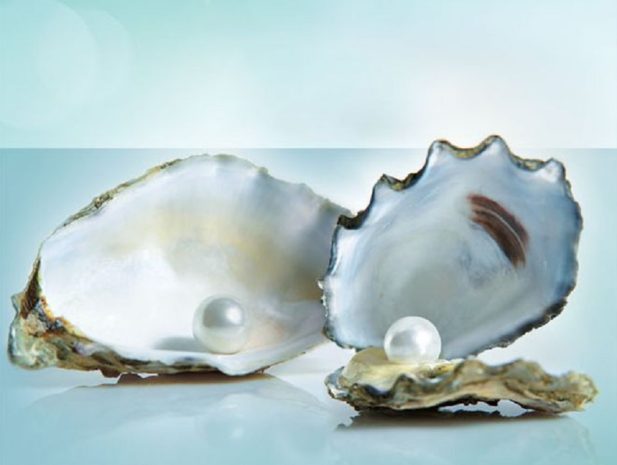
Pearl not result of foreign body reaction in oysters: Andaman-based scientist’s latest finding
PTI, Oct 17, 2021, 11:30 AM IST

Image for representation
New Delhi: After achieving breakthroughs in pearl culture like developing world’s biggest black pearl and even in the shape of Lord Ganesha, Andaman and Nicobar-based independent scientist Ajai Kumar Sonkar on Sunday said his latest research finding that ‘pearl is not a result of foreign body reaction in oyster’ has scope to transform the global pearl culture industry.
Sonkar’s finding — from his research study ‘Tissue culture in marine oysters’ — has overturned the age-old belief held by most scientists that pearl was formed when a foreign substance gets stuck between the Oyster’s internal organ called the mantle and its shell.
And oyster produces a substance called nacre — crystalline material made of calcium carbonate and an organic protein called conchiolin — for creating the shell and the same it uses for covering the foreign matter, thereby forming a pearl.
Thus, the pearl is formed as part of a biological process within the oyster. But in cultured pearls, small foreign substances are manually inserted in the mantle of oysters to produce pearls.
Speaking to PTI, Sonkar said, ”Earlier in many global conferences and papers, I used to say that pearls are a result of a foreign-body reaction. But it is wrong. My latest research has revealed this.” The research has revealed that the mantle’s natural characteristic is to release calcium carbonate and it does not secrete this only when a foreign substance enters in it, he said.
Sonkar (48) conducted the research in an artificial environment at a tissue culture and cell biology facility located at Prayagraj, Uttar Pradesh for 18 months till September 2021.
”The fragments of mantle tissue of marine oysters Pinctada margaritifera were transported from Andaman Islands to Prayaraj about 2,000 km away from Andaman sea. Throughout transport, suitable osmolarity and alkalinity were maintained in the culture medium,” he said.
He said the tissues remained healthy even after 72 hours in the culture medium. After reaching, the tissues were again sterilized and cut into different sizes to prepare the explants for a series of experiments.
The research experiment concluded that granular cell proliferation and aragonite crystal formations in batch A1 and irregular pearl sac formation in the mantle tissue surgically operated with graft and shell particle in batch 2 have demonstrated the natural characteristic of genotypes of mantle tissue in the nacreous secretion process, he said.
”This has led to a successful biomineralization process of nacreous secretion in pearl formation in vitro. It reveals that the secretion of nacre by mantle tissue is not necessarily the result of foreign body reaction,” he observed.
Further, the research revealed that ”when we grow the mantle in vitro, there is no foreign body. The mantle secretes nacre for life time. Now, we know how to induce the mantle to secrete nacre and we also know what micronutrient can be induced to produce major aragonite crystallisation.”
Claiming that this research finding has a big scope to transform the global pearl culture industry, Sonkar said it is learnt from this research what is the best medium for making best pearls. ”You can customise by the medium — colour, quality, crystallization and size. Even the world’s most expensive pearls can be produced in a customised way,” he added.
Going forward, Sonkar said he will expand his research work in tissue pearl culture in other marine species and develop pearls in different shapes and colour. The scientist, who wants to focus more on developing ‘marine pearls’ using this technology, said that this can be expanded provided the government allocates a dedicated coastal area for this purpose.
The government support is required because individual researchers or any other private entity would face a lot of challenges to work in open sea pearl culture because of hindrances such as getting green clearances, pollution, cyclones among others, he added.
In India, much of the pearls sold are freshwater pearls mostly imported from China. Marine pearls are expensive. For instance, the world’s largest pearl of 22.2 mm size developed by Sonkar is estimated to be USD 30,000.
Sonkar, who otherwise hails from Uttar Pradesh came across pearl culture at the age of 17 years and got interested in the field as he grew up. He has been doing research on pearls in Andaman and Nicobar Islands since 2003.
His other major research works include: world’s first nucleated spherical pearl in freshwater mussel (1994), world’s largest pearl with 22.2 mm bead cut from Indian mussel (1998), a technique to control mortality of oysters during or due to surgery for grafting and nuclei implantation (2004) and 42 mm Ganesha pearl (2006).
Udayavani is now on Telegram. Click here to join our channel and stay updated with the latest news.
Top News

Related Articles More

Scientists say India’s ‘Deep Sea Mission’ on track; hydrothermal vent discovery just the beginning

ISRO to launch SpaDeX Mission on Dec 30

ISRO to study how crops grow in space on PSLV-C60 mission

ISRO & ESA agree to cooperate on astronaut training, mission implementation

Snatcher lands in police net in Delhi, AI tech helps reveal identity
MUST WATCH
Latest Additions

Manmohan Singh: Architect of India’s economic reforms

‘In 2012, Manmohan underwent operations, never quite recovered physically’

Former PM Dr. Manmohan Singh passes away at 92

Contractor dies by suicide, alleges Minister Priyank Kharge’s aide responsible

Cricket match to crime: Five minors held for armed robbery in Delhi
Thanks for visiting Udayavani
You seem to have an Ad Blocker on.
To continue reading, please turn it off or whitelist Udayavani.



















